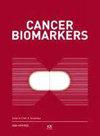机器学习确定了用于早期检测慢性萎缩性胃炎患者的 5 种血清细胞因子面板。
IF 1.9
4区 医学
Q3 ONCOLOGY
引用次数: 0
摘要
背景:慢性萎缩性胃炎(CAG)是胃癌(GC)的高危癌前病变。早期准确检测 CAG 并将其与良性胃炎(如慢性浅表性胃炎,CSG)区分开来对于胃癌的最佳治疗至关重要。然而,目前尚缺乏诊断 CAG 的准确非侵入性方法。方法收集 247 名接受内镜筛查的患者的血样,并使用多重免疫测定法量化 40 种细胞因子。患者被分为发现组和验证组。使用特征选择算法 Boruta 对每种细胞因子的重要性进行排序。结果确定了能区分 CAG 和 CSG 患者的五种血清细胞因子(IL-10、TNF-α、Eotaxin、IP-10 和 SDF-1a),并将其用于构建预测模型。该模型非常稳健,能高效识别 CAG 患者(AUC = 0.88,准确率 = 0.78)。结论利用最先进的 ML 和血液免疫测定技术,我们开发出了一种用于检测 GC 癌前病变的改进型无创筛查方法。BK20211039);无锡市卫生委员会中青年拔尖人才支持计划(BJ2023008);无锡市卫生委员会医学重点学科计划(ZDXK2021010),无锡市科技局项目(编号:N20201004);无锡市卫生委员会科研计划(Z202208,J202104)。本文章由计算机程序翻译,如有差异,请以英文原文为准。
Machine learning identifies a 5-serum cytokine panel for the early detection of chronic atrophy gastritis patients.
BACKGROUND
Chronic atrophy gastritis (CAG) is a high-risk pre-cancerous lesion for gastric cancer (GC). The early and accurate detection and discrimination of CAG from benign forms of gastritis (e.g. chronic superficial gastritis, CSG) is critical for optimal management of GC. However, accurate non-invasive methods for the diagnosis of CAG are currently lacking. Cytokines cause inflammation and drive cancer transformation in GC, but their utility as a diagnostic for CAG is poorly characterized.
METHODS
Blood samples were collected, and 40 cytokines were quantified using a multiplexed immunoassay from 247 patients undergoing screening via endoscopy. Patients were divided into discovery and validation sets. Each cytokine importance was ranked using the feature selection algorithm Boruta. The cytokines with the highest feature importance were selected for machine learning (ML), using the LightGBM algorithm.
RESULTS
Five serum cytokines (IL-10, TNF-α, Eotaxin, IP-10 and SDF-1a) that could discriminate between CAG and CSG patients were identified and used for predictive model construction. This model was robust and could identify CAG patients with high performance (AUC = 0.88, Accuracy = 0.78). This compared favorably to the conventional approach using the PGI/PGII ratio (AUC = 0.59).
CONCLUSION
Using state-of-the-art ML and a blood-based immunoassay, we developed an improved non-invasive screening method for the detection of precancerous GC lesions.
FUNDING
Supported in part by grants from: Jiangsu Science and Technology Project (no. BK20211039); Top Talent Support Program for young and middle-aged people of Wuxi Health Committee (BJ2023008); Medical Key Discipline Program of Wuxi Health Commission (ZDXK2021010), Wuxi Science and Technology Bureau Project (no. N20201004); Scientific Research Program of Wuxi Health Commission (Z202208, J202104).
求助全文
通过发布文献求助,成功后即可免费获取论文全文。
去求助
来源期刊

Cancer Biomarkers
ONCOLOGY-
CiteScore
5.20
自引率
3.20%
发文量
195
审稿时长
3 months
期刊介绍:
Concentrating on molecular biomarkers in cancer research, Cancer Biomarkers publishes original research findings (and reviews solicited by the editor) on the subject of the identification of markers associated with the disease processes whether or not they are an integral part of the pathological lesion.
The disease markers may include, but are not limited to, genomic, epigenomic, proteomics, cellular and morphologic, and genetic factors predisposing to the disease or indicating the occurrence of the disease. Manuscripts on these factors or biomarkers, either in altered forms, abnormal concentrations or with abnormal tissue distribution leading to disease causation will be accepted.
 求助内容:
求助内容: 应助结果提醒方式:
应助结果提醒方式:


